Without further ado, let us begin. We shall start with the ground level. Ground in Magic is the Priority system.
Priority
Priority is an imaginary license to perform certain actions. It is granted to the player by the game at certain moments of the turn.
If a player doesn’t have priority, he or she may do something only if instructed by the game rules or any specific effect. Generally, the game wonders if a player wishes to take an action only when it issues him or her the “license to perform an action”.
After gaining such a “license”, the player may use it on any of the four following actions:
- perform a special action,
such as turn a Morph or a manifested card face up, play a land, suspend a card etc.; - cast a spell;
- activate an ability;
- refuse to take an action — pass.
In cases 1-3, the game will issue a new “license” to that same player, after running all State-Based Actions (SBA) and putting onto the stack all triggers that triggered since the last issue of priority.
If the player passes, priority (with all the same due procedure of running SBA and planting piles of triggers on the stack) will be issued to the next player in turn order, unless each player has passed in that order.
If they have, the upper element of the stack resolves.
If the stack is empty, the game will move its pointer to the next step or phase. Thus, the game takes us from one moment of time to another according to our wishes — with due conditions met, a new step or phase will begin at some point for certain.
The system of passing priority is described in rules 116.3-4:
116.3. Which player has priority is determined by the following rules:
116.3a. The active player receives priority at the beginning of most steps and phases, after any turn-based actions (such as drawing a card during the draw step; see rule 703) have been dealt with and abilities that trigger at the beginning of that phase or step have been put on the stack. No player receives priority during the untap step. Players usually don’t get priority during the cleanup step (see rule 514.3).
116.3b. The active player receives priority after a spell or ability (other than a mana ability) resolves.
116.3c. If a player has priority when he or she casts a spell, activates an ability, or takes a special action, that player receives priority afterward.
A player may in some cases play spells without having priority, for instance, while resolving the trigger of Cascade or Suspend.
116.3d. If a player has priority and chooses not to take any actions, that player passes. If any mana is in that player’s mana pool, he or she announces what mana is there. Then the next player in turn order receives priority.
If you add 116.4 here:
116.4. If all players pass in succession (that is, if all players pass without taking any actions in between passing), the spell or ability on top of the stack resolves or, if the stack is empty, the phase or step ends.
then you obtain the following pattern for a game involving two participants:
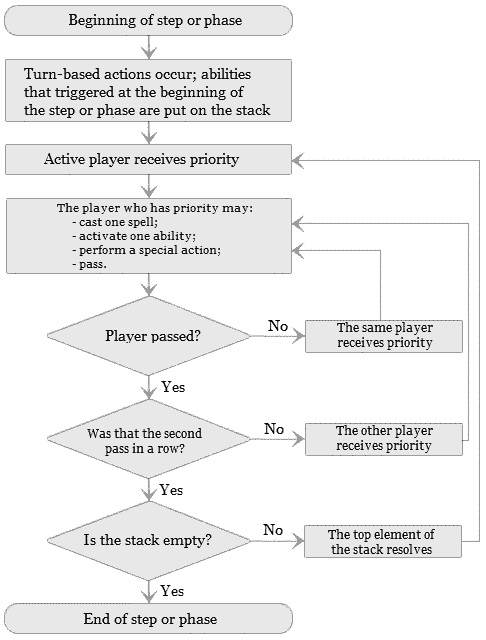
It’s important to understand that while a spell is being cast or is resolving, while activating and resolving abilities, and while performing turn-based actions (such as declaring attackers of blockers) none of the players has priority, meaning that without any special reasons, players may not cast spells or activate abilities at that moment.
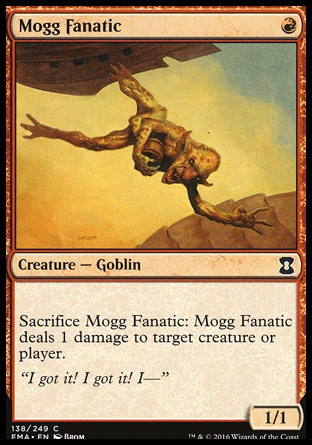
Between assigning and dealing combat damage players do not get priority, so one cannot assign the damage of Mogg Fanatic and then activate its ability.
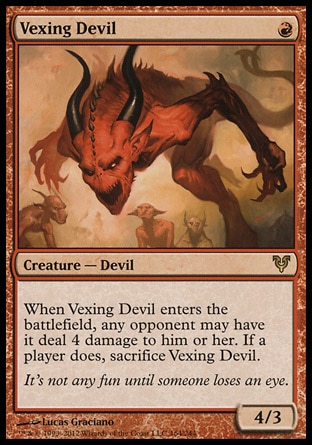
If your opponent is choosing whether to take 4 damage or not, you are in the process of resolving Vexing Devil’s trigger, so you cannot do anything with it yet.
A player may cast a spell without having priority only if an effect allows or instructs to do so. For instance:
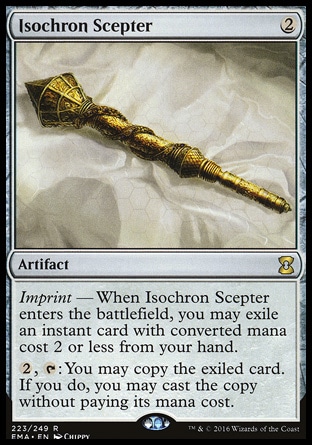
The effect of Isochron Scepter’s activated ability instructs to cast a copy of the imprinted card.
A Miracle spell is cast at resolution of Miracle’s trigger because its effect allows to do so.
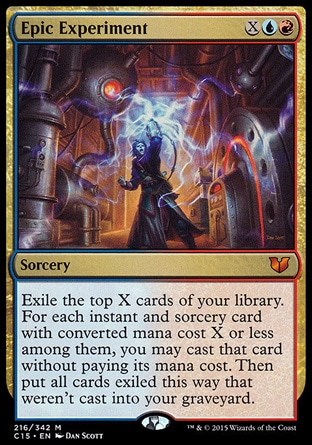
The effect of Epic Experiment allows playing any of the cards exiled with it, as long as its mana value is X or less.
Mana abilities may be activated by a player without having priority if he or she is playing a spell or activating an ability that require a mana payment; or if an effect or the rules instruct to pay a cost with mana:
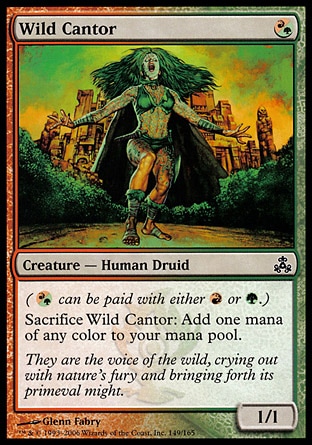
You may activate the mana ability of Wild Cantor while playing an ability or casting a spell if mana is required to pay for it.
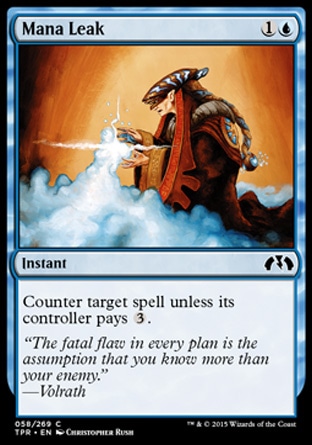
Mana Leak allows a player to pay {3} on resolution. Despite that player not having priority, he may activate mana abilities in order to gain mana for paying.
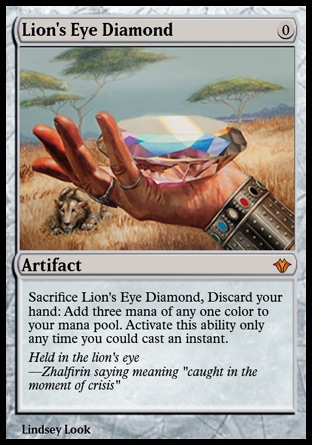
Mana abilities that have limitations to activate, such as “Activate this ability only any time you could cast an instant” may be activated only when the player has priority.
In order to give priority forward, a player needs to pass. Of course, in actual games players do not usually mouth every pass. We wouldn’t be playing the game if such boring procedures were compulsory. For this reason, players use tournament shortcuts that speed up the game ensuring mutual understanding of what is happening.
Stack
The Stack is a common zone for all players (there is just one stack in all Magic game types except for the Grand Melee format where there may be several Stacks), just like the Battlefield or the Exile zone.
The Stack always exists (but, of course, it may be empty). It is not created nor does it disappear; it cannot resolve. If you hear things like “new stack” or “resolve the stack”, that’s blasphemy! ;)
Only spells and abilities, activated and triggered, may be on the Stack. Effects never appear on the stack!
Some long time ago combat damage used to go to the stack too, but that time has long passed.
The Stack has two principle features:
- Everything that’s on the stack is in a strict order, and will leave the stack in the opposite order: came last, goes first. To model this behavior we can picture a transparent jar where we put spells and abilities in a… well, stack :) We can only reach the bottom element after resolving everything that’s above it. However, a spell or ability may leave the stack without resolving; in this case, they are “extracted” from any part of the stack, for example, by being countered or exiled.
- The game constantly watches the state of the stack without ever paying attention to other game zones (with the exception of the Library, but for only one matter: whether the player is able to draw a card).
Newer objects are added on top of the stack. Incidentally, some of these objects require the stack to be empty at this point (such as creature spells). It is absolutely normal when one or more objects of the stack resolve and leave it, some remain in it, then some more spells or abilities are added to it.
For instance, if the cunning opponent plays Demigod of Revenge, it is wise to first resolve the Demigod’s trigger (which will go to the stack above the Demigod spell itself), and then Cancel it to counter the Demigod that’s still on the stack. Otherwise, you will find yourself upset.
When fixing an infraction called missed triggered ability, the judge may place the missed trigger into an appropriate place on the stack. Note specifically that this situation is not dictated by the game mechanics. Such deliberate managing of the stack is available only to judges, not to players.
Phases and steps
Each player has his or her own turn. In Two-headed Giant, the team shares turns, i.e. all players of one team have common steps and phases of each turn of theirs.
A turn consists of phases. Some phases are divided into steps.
Beginning phase:
- Untap step
- Upkeep step
- Draw step
First (precombat) main phase
- Beginning of combat step
- Declare attackers step
- Declare blockers step
- Combat damage step
- End of combat step
Second (postcombat) main phase
End phase:
- End of turn step
- Cleanup step
Some time ago, the difference between a phase and a step was immense, because mana would stay in the pool (improvised container where mana is stored after being generated) until the end of a phase, then burn away by dealing mana-burn. Now mana disappears without dealing any damage at the end of each step(!). However, it is important to learn the turn structure well. I had a case when a candidate showed relatively good level of rules knowledge but failed the interview solely by entrirely confusing all names of phases and steps.
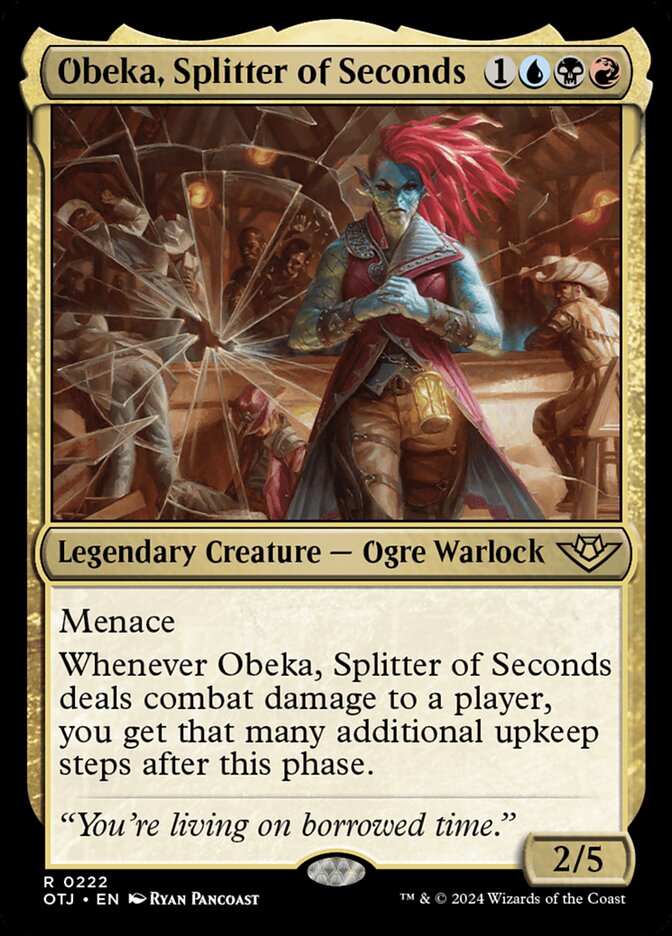
You get an additional beginning phase for each combat damage deals by Obeka after the combat. In those beginning phases, the untap and draw steps will be skipped.
Abilities that trigger “at the beginning of [your] upkeep” will trigger at the beginning of each additional upkeep step.
The combat phase will be analyzed in detail.
Homework
During what phases or steps do players not receive priority?
In any case during the untap step, and usually during the cleanup step. It is often omitted that players get priority during draw step and may play spells and activate abilities. But the cleanup step is rather peculiar. Usually nothing happens in this step, but if SBA are generated or triggers happen, priorities are issued. Exceptions are listed in CR #514 (CR = Comprehensive rules, i.e. the complete rules of Magic)
What is the difference between a phase and a step?
A phase may consist of steps.
NB: The mana pool is emptied at the end of each step or phase, without any harm to the player.
What phases do not have steps?
The main phase, and the main phase again.
From game point of view they are identical.
Why was the wording “at end of turn” changed to “at the beginning of the end step”?
Because players often confused “at end of turn” with “until end of turn”. Besides, this way the wordings of triggers happening in the upkeep step and in the end step look the same.
”At the beginning of the end step” used to denote a specific moment of time, a point on the time scale — the beginning of the end of turn step, and was used only for triggered and delayed triggered abilities. “Until end of turn” signifies the length of existence of a continuous effect that will end in the cleanup step (!).
Why will a token produced by Kiki-Jiki, Mirror Breaker at the end of turn step of its controller not die this turn?
The next time the moment described as “at the beginning of the end step” arrives will be at the beginning of the opponent’s end of turn. Only then will the controller of the token sacrifice it.
What happens if attackers are not declared at the declare attackers step?
If no creatures are declared attackers, the declare blockers step and the combat damage step are skipped. The game will forward us straight to the end of combat step.
More details about the combat phase.
What actions do not use the stack?
405.6. Some things that happen during the game don’t use the stack.
405.6a. Effects don’t go on the stack; they’re the result of spells and abilities resolving. Effects may create delayed triggered abilities, however, and these may go on the stack when they trigger (see rule 603.7).
405.6b. Static abilities continuously generate effects and don’t go on the stack. (See rule 604, “Handling Static Abilities.”) This includes characteristic-defining abilities such as “[This object] is red” (see rule 604.3).
405.6c. Mana abilities resolve immediately. If a mana ability both produces mana and has another effect, the mana is produced and the other effect happens immediately. If a player had priority before a mana ability was activated, that player gets priority after it resolves. (See rule 605, “Mana Abilities.”)
405.6d. Special actions don’t use the stack; they happen immediately. See rule 115, “Special Actions.”
405.6e. Turn-based actions don’t use the stack; they happen automatically when certain steps or phases begin. They’re dealt with before a player would receive priority (see rule 116.3a). Turn-based actions also happen automatically when each step and phase ends; no player receives priority afterward. See rule 703.
405.6f. State-based actions don’t use the stack; they happen automatically when certain conditions are met. See rule 704. They are dealt with before a player would receive priority. See rule 116.5.
405.6g. A player may concede the game at any time. That player leaves the game immediately. See rule 104.3a.
405.6h. If a player leaves a multiplayer game, objects may leave the game, cease to exist, change control, or be exiled as a result. These actions happen immediately. See rule 800.4a.
When do the State-Based Actions (SBA) happen?
704.3. Whenever a player would get priority (see rule 116, “Timing and Priority”), the game checks for any of the listed conditions for state-based actions, then performs all applicable state-based actions simultaneously as a single event.
If any state-based actions are performed as a result of a check, the check is repeated; otherwise all triggered abilities that are waiting to be put on the stack are put on the stack, then the check is repeated.
Once no more state-based actions have been performed as the result of a check and no triggered abilities are waiting to be put on the stack, the appropriate player gets priority.
This process also occurs during the cleanup step (see rule 514), except that if no state-based actions are performed as the result of the step’s first check and no triggered abilities are waiting to be put on the stack, then no player gets priority and the step ends.
Can a player cast a card for its Madness cost as she discards it during her cleanup step? Why?
She sure can. Because discarding a card with Madness starts a triggered ability and further on following the description of cleanup step :)
I turn Vesuvan Shapeshifter face up, choosing to copy an opponent’s Mogg Fanatic. Can the opponent sacrifice the Fanatic in response? What happens to the Shapeshifter in that case?
That cannot happen as described, because "unmorphing" is a special action, it doesn’t use the stack.
I have no cards in hand. In process of resolving Civilized Scholar’s ability, I draw a Lightning Bolt. May I cast it?
You cannot. In process of resolving an ability, neither player receives priority including you. So you cannot cast a card.
May the active player play something in his declare attackers step before declaring attackers?
He cannot. He will get priority only after attackers have been declared. The same thing happens in declare blockers step: first, blockers are declared, then triggers are put on the stack, then priority is received.
Find the mistake in the video:
You may activate the mana ability of Gemstone Caverns in one of two cases:
- if you have priority (which you don’t have in the video since you gain priority for the first time only after your opponent passes in his upkeep step);
- if the rules or an effect instruct you to pay an a cost with mana (that doesn’t happen either).
So, from this point onwards, the creator of the video is speaking bull. It cannot be done.
Read the rules and have fun!
Translated by Witas Spasovski
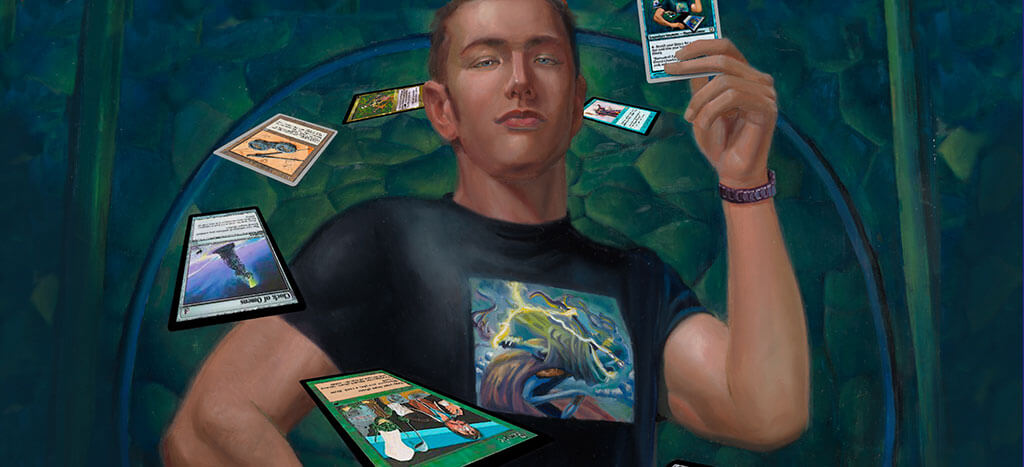
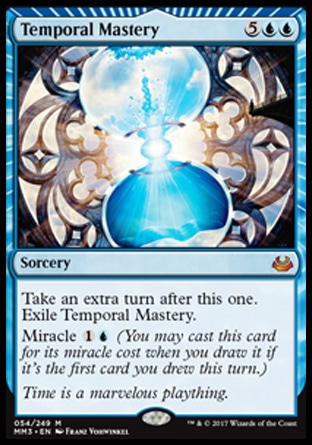
In process of resolving Brainstorm, the player may not discard the drawn cards to pay Putrid Imp’s ability, because at that moment he doesn’t have priority and may not activate that ability.